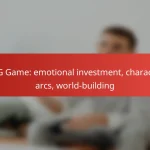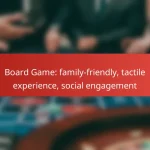In multiplayer games, team dynamics play a crucial role in shaping player interactions and overall performance. Strong social connectivity enhances teamwork and builds lasting relationships, fostering a vibrant gaming community. Additionally, competitive gameplay motivates players to excel, driving both personal achievement and collective success within their teams.
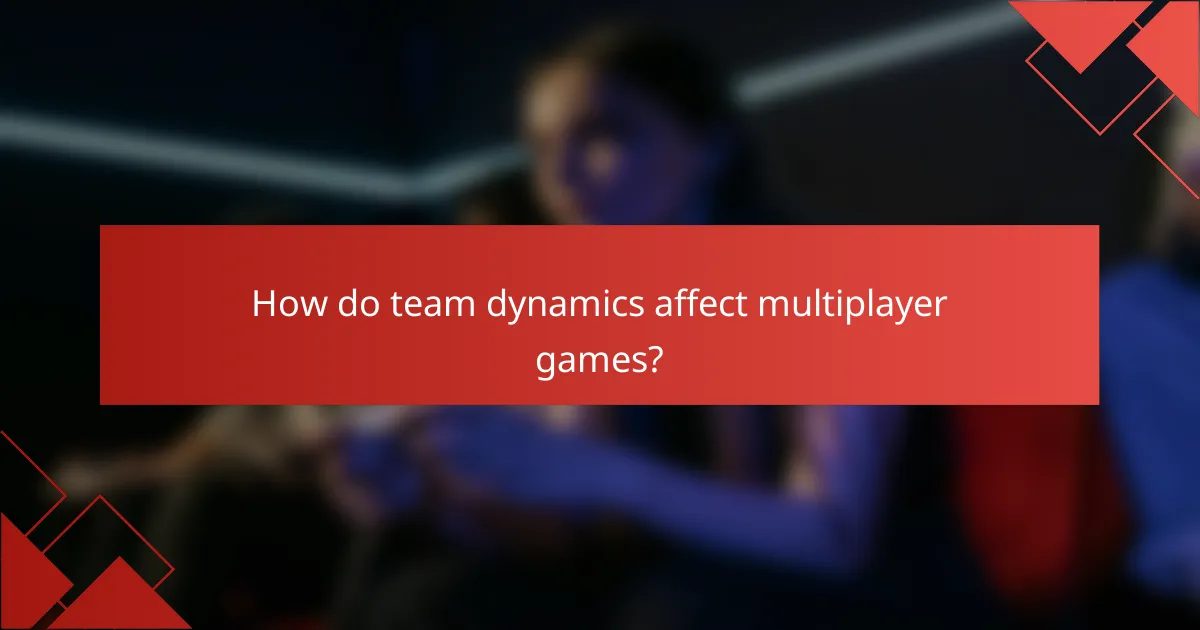
How do team dynamics affect multiplayer games?
Team dynamics significantly influence multiplayer games by shaping how players interact, cooperate, and compete. Effective team dynamics can lead to improved performance, stronger social connections, and a more enjoyable gaming experience.
Collaboration enhances performance
Collaboration among team members is crucial for achieving objectives in multiplayer games. When players work together, they can combine their skills and strategies, leading to better outcomes in competitive scenarios.
For example, in team-based shooters, coordinated attacks and shared resources can increase the chances of victory. Teams that practice collaboration often see performance improvements of 20-30% compared to those that do not.
Communication builds trust
Effective communication is essential for building trust within a team. When players share information, strategies, and feedback, they foster a sense of reliability that enhances teamwork.
Using voice chat or in-game messaging can facilitate quick decision-making and reduce misunderstandings. Teams that prioritize open communication tend to have higher win rates, as trust allows for more cohesive gameplay.
Roles influence gameplay
Assigning specific roles within a team can greatly influence gameplay dynamics. Each player can focus on their strengths, whether that be offense, defense, or support, leading to a more balanced approach.
For instance, in a multiplayer role-playing game, having dedicated healers, damage dealers, and tanks can create a well-rounded team capable of tackling various challenges. Clear role definitions help prevent overlap and confusion, ensuring that each player contributes effectively to the team’s success.

What are the benefits of social connectivity in gaming?
Social connectivity in gaming fosters teamwork, builds relationships, and enhances the overall gaming experience. Players who engage socially are more likely to stay committed to games, leading to a more vibrant gaming community.
Improved player retention
Social connectivity significantly boosts player retention by creating a sense of belonging among gamers. When players form friendships and collaborate with others, they are more likely to return to the game, often citing the social aspect as a primary reason for their continued engagement.
For example, multiplayer games that encourage team-based objectives or guilds often see retention rates that are notably higher than those of solo-play games. Players who invest time in building relationships within the game environment tend to stick around longer, sometimes for months or even years.
Enhanced enjoyment and engagement
Social connectivity enhances enjoyment and engagement by making gameplay more interactive and fun. Players who communicate and strategize with friends or teammates often experience a deeper level of immersion and satisfaction.
Games that incorporate social features, such as voice chat or cooperative missions, allow players to share experiences and achievements, which can lead to increased enjoyment. Engaging in friendly competition or collaborating on challenges can transform a gaming session into a memorable social event.
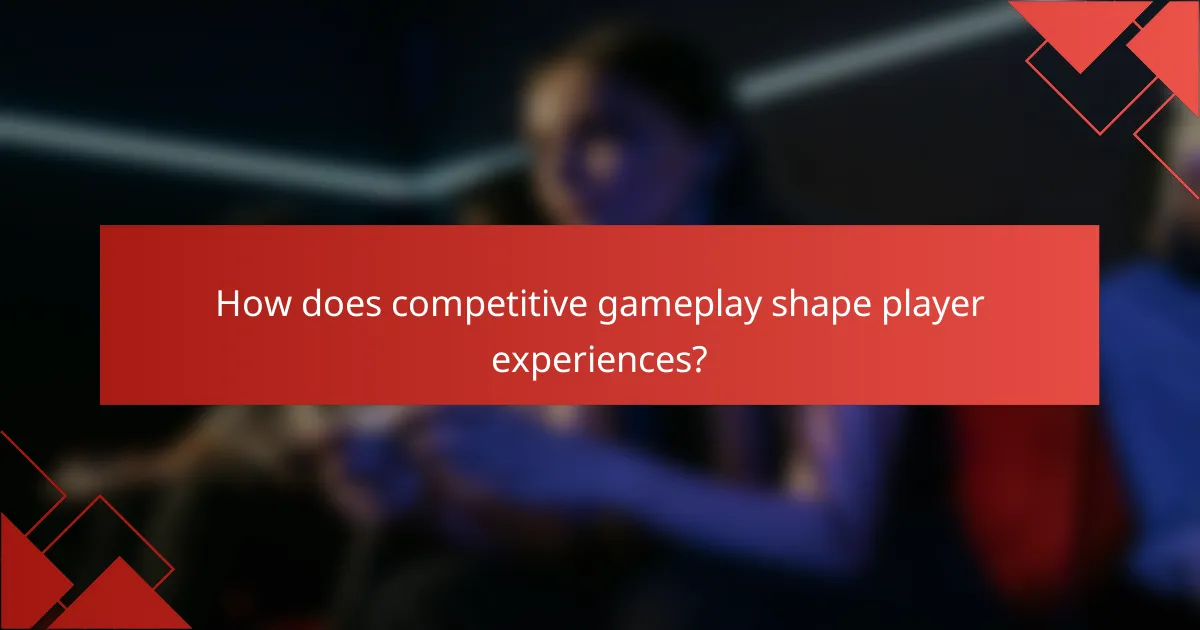
How does competitive gameplay shape player experiences?
Competitive gameplay significantly enhances player experiences by fostering a sense of achievement and community. Players are driven to excel not only for personal satisfaction but also to contribute to their team’s success, creating a dynamic environment that encourages collaboration and skill development.
Increased motivation to improve
In competitive gaming, the desire to win motivates players to enhance their skills. This drive often leads to regular practice and a commitment to learning new strategies, resulting in noticeable improvements over time.
Players may set personal goals, such as achieving a higher rank or mastering a specific character, which can further fuel their motivation. Engaging with teammates for feedback and support can also amplify this improvement process.
Development of strategic thinking
Competitive gameplay encourages players to think critically and develop strategies to outsmart opponents. Players must analyze their own strengths and weaknesses, as well as those of their rivals, to devise effective tactics.
This strategic mindset can be cultivated through various methods, such as reviewing gameplay footage, discussing strategies with teammates, or studying successful players. Over time, these skills can translate into better decision-making both in-game and in real-life scenarios.
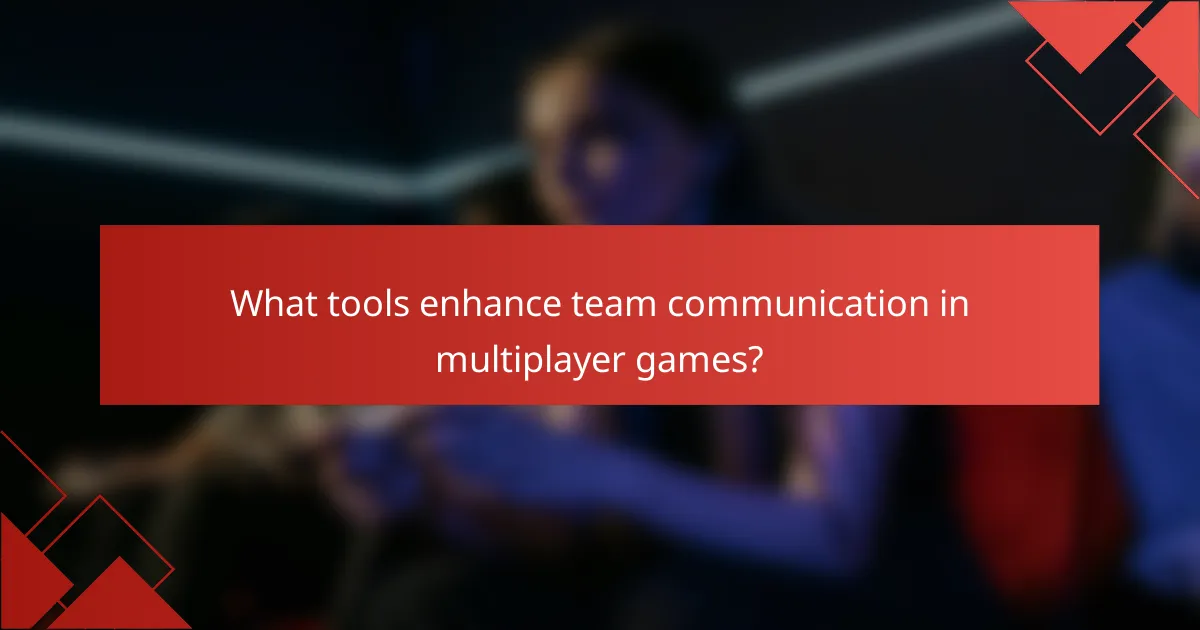
What tools enhance team communication in multiplayer games?
Effective team communication in multiplayer games is crucial for success and can be significantly improved with the right tools. Utilizing platforms designed for voice chat and task management can streamline interactions and enhance overall gameplay experience.
Discord for voice chat
Discord is a popular voice chat platform that allows gamers to communicate in real-time during gameplay. It supports both voice and text channels, making it easy for teams to coordinate strategies and share updates without interrupting the flow of the game.
To maximize its effectiveness, teams should create dedicated channels for different game modes or objectives. This organization helps keep conversations focused and reduces distractions. Additionally, using Discord’s integration features with games can provide notifications and updates directly within the app.
Trello for task management
Trello is a versatile task management tool that can help teams organize their gameplay strategies and responsibilities. By creating boards for different game objectives, players can assign tasks, set deadlines, and track progress visually, which enhances accountability and teamwork.
To implement Trello effectively, teams should establish clear categories for tasks, such as roles, objectives, and strategies. Regularly updating the board and holding brief check-ins can ensure everyone is aligned and aware of their responsibilities, ultimately improving team performance during competitive play.

What are the key factors for successful team formation?
Successful team formation in multiplayer games hinges on aligning player skills and establishing shared goals. These factors enhance collaboration and improve overall performance, leading to a more enjoyable gaming experience.
Player skill level alignment
Aligning player skill levels is crucial for effective teamwork. When team members possess similar skills, they can communicate and strategize more efficiently, reducing frustration and enhancing synergy. For example, a team of intermediate players will likely perform better than a mix of beginners and experts.
To assess skill alignment, consider using ranking systems or performance metrics. Regularly evaluate team members’ skills and adjust team compositions as needed to maintain balance. Avoid creating teams where one player feels overwhelmingly outmatched, as this can lead to disengagement.
Shared goals and objectives
Establishing shared goals and objectives is essential for team cohesion. When all members understand and commit to common targets, they can work together more effectively. For instance, a team aiming to complete a specific mission or achieve a high rank will be more focused and motivated.
To foster shared objectives, engage team members in discussions about their individual aspirations and how these align with the team’s goals. Regularly revisit these objectives to ensure everyone remains on the same page and feels invested in the team’s success. Avoid vague goals that can lead to confusion and misalignment among players.

How do cultural differences impact multiplayer gaming?
Cultural differences significantly influence multiplayer gaming by shaping how players communicate, compete, and collaborate. Understanding these variations can enhance team dynamics and improve overall gaming experiences.
Varied communication styles
Players from different cultures often have distinct communication styles that can affect teamwork. For instance, some cultures may favor direct and assertive communication, while others might prioritize indirect and nuanced expressions. This can lead to misunderstandings if team members are not aware of these differences.
To navigate varied communication styles effectively, players should establish clear guidelines for interactions. Using simple language and confirming understanding can help bridge gaps. For example, a team could agree on specific phrases to signal agreement or confusion, ensuring everyone is on the same page.
Different competitive attitudes
Cultural backgrounds can shape players’ competitive attitudes, influencing how they approach challenges and victories. In some cultures, winning may be seen as paramount, while others might emphasize enjoyment and learning over competition. This divergence can affect motivation and team cohesion.
To accommodate different competitive attitudes, teams should discuss their goals and expectations openly. Establishing a balance between competitiveness and camaraderie can foster a more inclusive environment. For instance, setting up friendly competitions or collaborative tasks can help align diverse motivations within the team.

